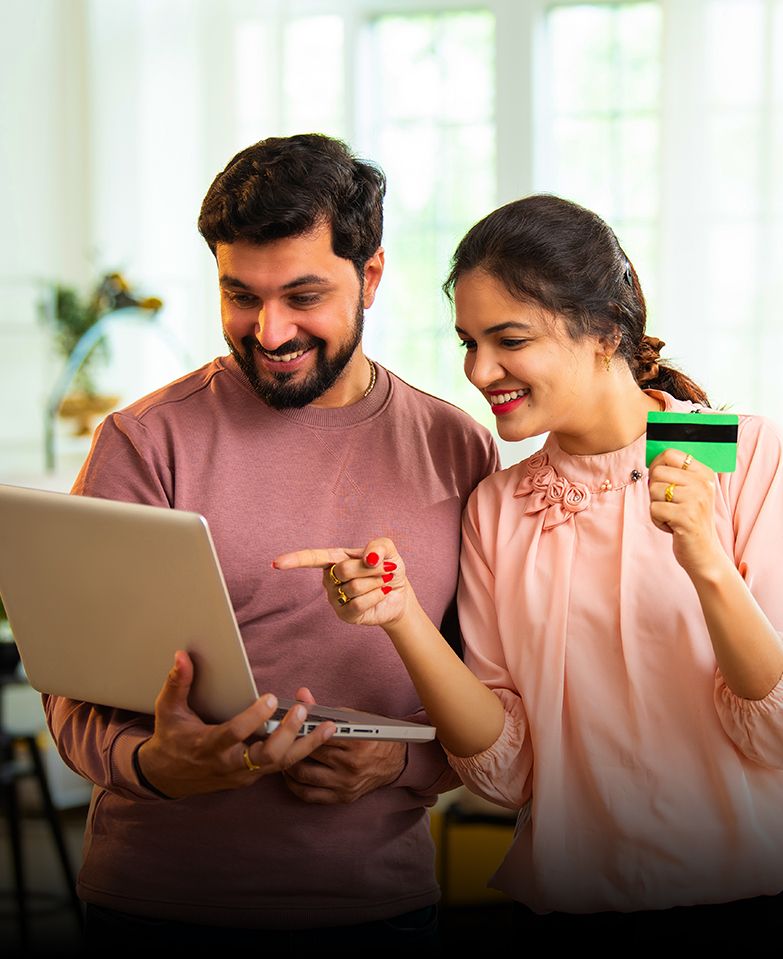
What is a Savings Account and How to Open It?
A savings account is the most widely recognised type of bank account that lets you earn interest on the balance you maintain. Banks in India offer multiple variants to suit different needs, so it is helpful first to understand your requirements and then choose the right type of savings account. Opening a new account today is simple and can be done either at a branch or entirely online through a video KYC journey. The right choice gives you safety for your money, steady growth through interest, and convenient access when you need it.
What is a Savings Account?
A savings account is a deposit account you can open with any bank, public or private, to park surplus funds and access them whenever required. It supports everyday transactions, bill payments, transfers, and cash withdrawals while paying interest on the balance. Banks now provide customised variants for women, children, and senior citizens along with features such as competitive interest rates, low or zero maintenance charges, and wide ATM access. Digital savings accounts have become popular because onboarding is quick, paperless, and can be completed from home through secure verification. This blend of safety, liquidity, and interest makes a savings account an excellent foundation for day-to-day money management and short-term goals.
Why do you need a Savings Account?
A savings account helps your money grow while keeping it readily available for planned and unplanned expenses. Interest accrues on the balance you maintain, which supports disciplined saving over time. Your funds are held within a regulated banking system that offers strong protection and reliable record-keeping. Access is simple through ATMs, internet banking, mobile apps, cheques, and UPI, so you can move money without friction. For many customers, a savings account also becomes the entry point to other services such as cards, loans, investments, and insurance.
Advantages of a Digital Savings Account
Digital savings accounts are designed for convenience without compromising security. The entire onboarding can be completed online, and you can begin using the account quickly after verification. They offer modern payment options and frequently come with attractive fee structures. Many also provide tools that help you track spending and manage savings goals.
1. Paperless Workflow
Opening an account online removes paperwork and branch visits. You typically provide PAN and Aadhaar details in a secure flow and confirm identity through OTP and live video verification. This reduces errors that occur with manual forms and speeds up approval. It is especially helpful for people who prefer digital journeys or are unable to visit a branch. Once verified, you can start using the account right away for digital transactions.
2. Monthly Average Balance Flexibility
Minimum balance rules vary by bank and account type. Several digital variants allow low or even zero monthly average balance, which is useful for students, first-jobbers, and users who want flexibility. If you choose an account with a balance requirement, check how the average is calculated and what fees apply if you fall short. Understanding this beforehand helps you avoid charges and select an account that matches your cash-flow pattern. If you prefer not to track balances, consider a zero-balance option.
3. Debit card Access
A digital account generally issues a virtual debit card instantly for online use. You can later request a physical card or premium variants like metal or image cards if offered by your bank. The card enables ATM withdrawals, in-store payments, and secure online checkouts with strong authentication. Managing the card through the app makes it easy to set limits, enable international usage, or temporarily lock the card if required. This keeps spending both convenient and controlled.
4. Online Payments and Transfers
Modern accounts support UPI, mobile banking, net banking, and QR-based Scan & Pay. These modes let you send and receive money, pay bills, and top up services in seconds. You can also set standing instructions for recurring transfers or scheduled payments to avoid late fees. Because everything runs through authenticated channels, you retain a digital trail that simplifies tracking and reconciliation. It is a practical way to handle everyday money movement.
5. Interest on Balances with Smart Features
Savings accounts pay interest that is credited at defined intervals as per bank policy. Some banks offer sweep or auto-park features that move idle balances into linked deposits to help you earn a higher rate while keeping funds accessible. Review how interest is calculated, whether it is on daily closing balance, and when credits occur. Understanding these mechanics helps you optimise returns without adding complexity. Over time, this can make a meaningful difference to your savings.
Documents Required to Open a Savings Account
Banks must complete KYC before opening an account, and the list of documents is straightforward. You will usually need a proof of identity and age such as PAN, Passport, Voter ID, Driving licence, or Aadhaar. A valid address proof is also required, which can be the Passport, Voter ID, Driving licence, or a recent utility bill in your name. Most banks ask for a recent passport-size photograph to complete the file. Senior citizens who wish to open dedicated variants may be asked for proof of age or a government-issued senior citizen card to access specific benefits.
Documents Required to Open a Savings Account
To open a savings account, you must complete KYC (Know Your Customer) verification. The process is simple and requires only basic documents. Here’s what you’ll need to typically submit:
Proof of Identity and Age
- PAN Card
- Passport
- Voter ID card
- Driving licence
- Aadhar card
Proof of Address
- Passport
- Voter ID card
- Driving license
- Utility bill in your name
Photograph
- A recent passport-size photograph
Senior citizens may need to show a government-issued senior citizen card for specialised accounts.
Who Can Open a Savings Account Online?
If you are 18 years or older, have a valid PAN, and are a resident of India, you can open a savings account online. Using an Aadhaar-linked mobile number allows banks to complete e-KYC and video KYC within minutes.
Non-resident individuals or minors can also open savings accounts, though their process may involve additional documents or branch visits.
How Can You Open a Savings Account Offline?
If you prefer visiting a branch, the offline process is straightforward.
Steps to open a savings account offline:
- Visit your nearest bank branch.
- Request the savings account opening form and fill in your details carefully.
- Attach self-attested copies of KYC documents and photographs.
- Submit the form along with your initial deposit, if required.
- Once the documents are verified, your account will be activated within a few days.
After activation, you will receive a welcome kit with your account number, cheque book, passbook, and debit card.
How Can You Open a Savings Account Online?
Opening an online savings account is fast and can be completed from home. Most banks now allow you to open an account within minutes through video KYC. Here’s how to do it:
- Visit the bank’s website or download its mobile app.
- Select the option to open a savings account online.
- Enter your name, mobile number, and email ID.
- Verify your mobile number using the OTP sent by the bank.
- Enter your PAN and Aadhaar number for identity verification.
- Approve access to your Aadhar-linked details.
- Review your pre-filled information and update your address if necessary.
- Add nominee details and proceed to video KYC.
- Accept the bank’s terms and conditions.
- Once verified, your account will be activated, and you can start transacting immediately.
You can also open a zero-balance savings account using Aadhaar OTP verification, making the process even quicker.
Things to Consider Before Opening a Savings Account
Before deciding where to open your account, take a few moments to compare your options.
Key points to keep in mind:
- Choose a bank offering a competitive interest rate.
- Check the minimum balance requirement and avoid accounts with high fees.
- Look for good digital banking facilities like UPI, net banking, and mobile apps.
- Ensure wide ATM availability for cash withdrawals.
- Read the terms and conditions carefully before finalising your choice.
These steps help you find an account that aligns with your financial needs and lifestyle.
Managing Your Savings Account
Once your account is active, you can begin using it right away. You’ll receive an account kit containing your account number, debit card, and cheque book.
To make the most of your account:
- Register for online and mobile banking to track transactions easily.
- Enable UPI and Scan & Pay for faster transfers.
- Keep your KYC details up to date to avoid service interruptions.
- Review your balance and statements regularly to monitor spending.
- Use standing instructions or automatic transfers for bill payments and savings.
Also Read: Top 10 Features of a Savings Account
Conclusion
A savings account is a secure, flexible, and rewarding way to manage your money. You can open one offline by visiting a branch or online through a simple video KYC process. Digital accounts make banking easier with zero paperwork, instant activation, and 24/7 access.
By understanding the documents required, comparing account options, and choosing a bank that matches your needs, you can start saving confidently. A savings account is about building healthy financial habits for a stable future.
Popular Searches on Kotak811
Kotak 811 | 811 Super Account | Super Savings Account Fees And Charges | Best Zero Balance Account Opening Online | Best Credit Card for Online Shopping In India | FD Credit Card | Visa Debit Card | Apply for Image Debit Card | Metal Debit Card | ActivMoney Savings Account | Open Savings Account Online | Savings Account Fees and Charges | Check Your CIBIL Score | Reactivate Dormant Account Online | Digital Savings Account | Apply for Personal Loan Online | Personal Loan for Education | Personal Loan For Marriage | Personal Loan For Medical Emergency | Personal Loan For Travel | Unsecured Personal Loans | Complete Guide on Fixed Deposit (FD) | Unfreeze Your Bank Account | How To Find Your Bank Account Number | How To Unfreeze Frozen Bank Account | How To Reactivate An Inactive Or Dormant Savings Account | What Is A Passbook | Zero Balance Current Account Opening Online | Zero Balance Current Account Fees & Charges | How To Get Airport Lounge Access On Debit Card | 811 Mobile Banking App
This Article is for information purposes only. The views expressed in this Article do not necessarily constitute the views of Kotak Mahindra Bank Ltd. (“Bank”) or its employees. Bank makes no warranty of any kind with respect to the completeness or accuracy of the material and articles contained in this Newsletter. The information contained in this Article is sourced from empanelled external experts for the benefit of the customers and it does not constitute legal advice from Kotak. Kotak, its directors, employees, and contributors shall not be responsible or liable for any damage or loss resulting from or arising due to reliance on or use of any information contained herein.
Share




